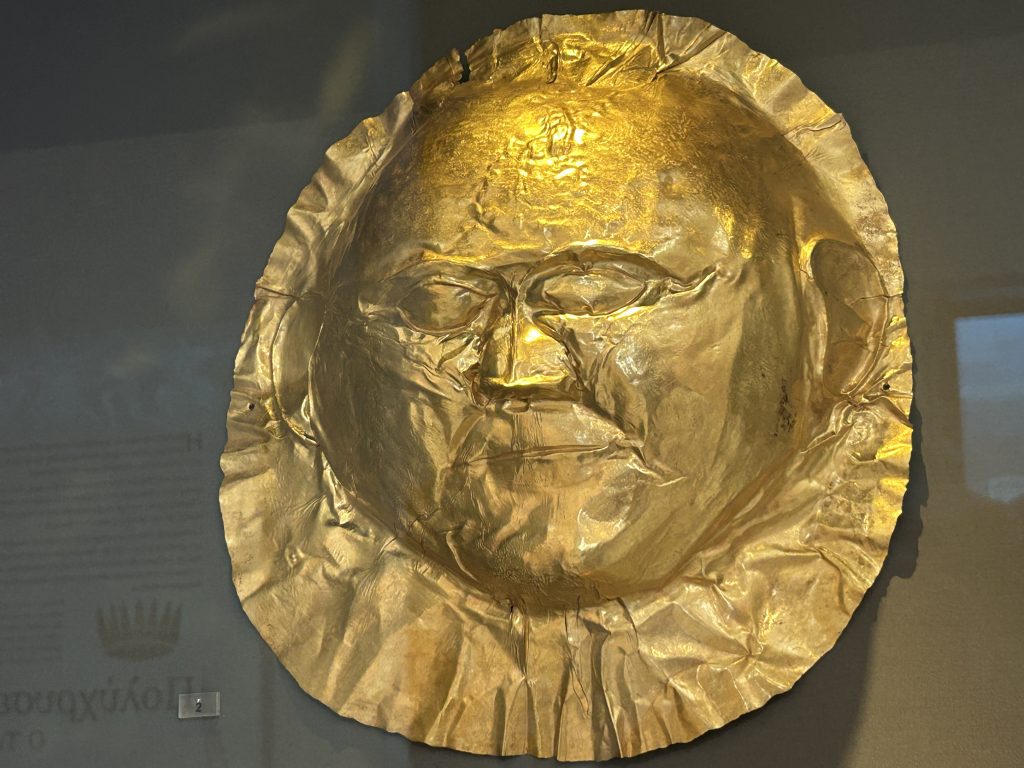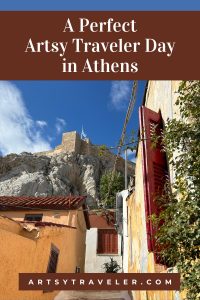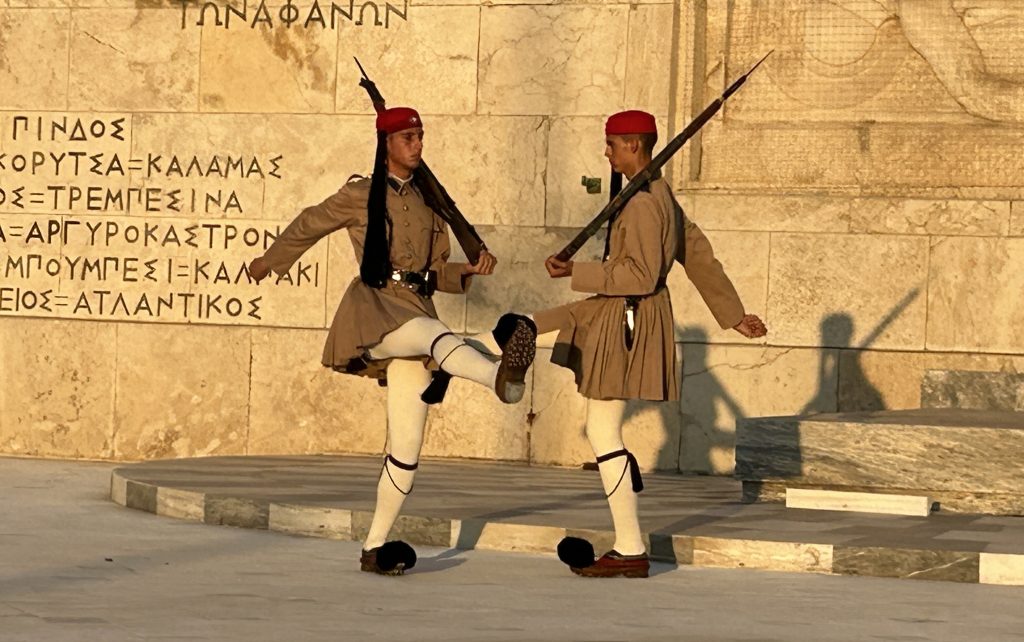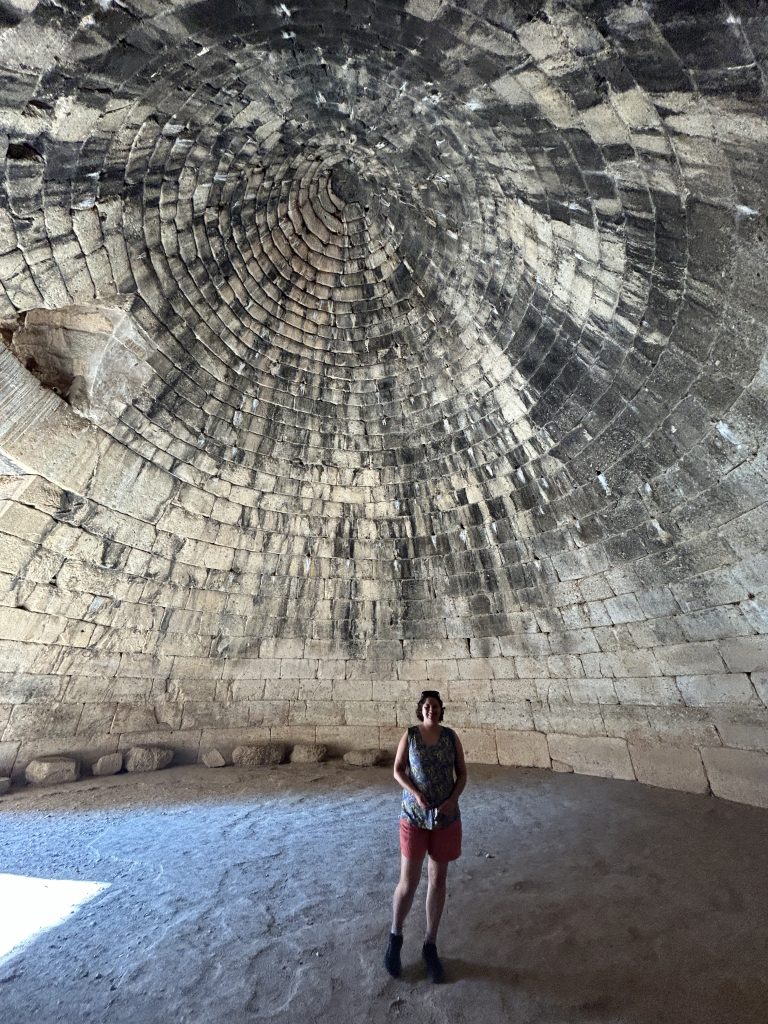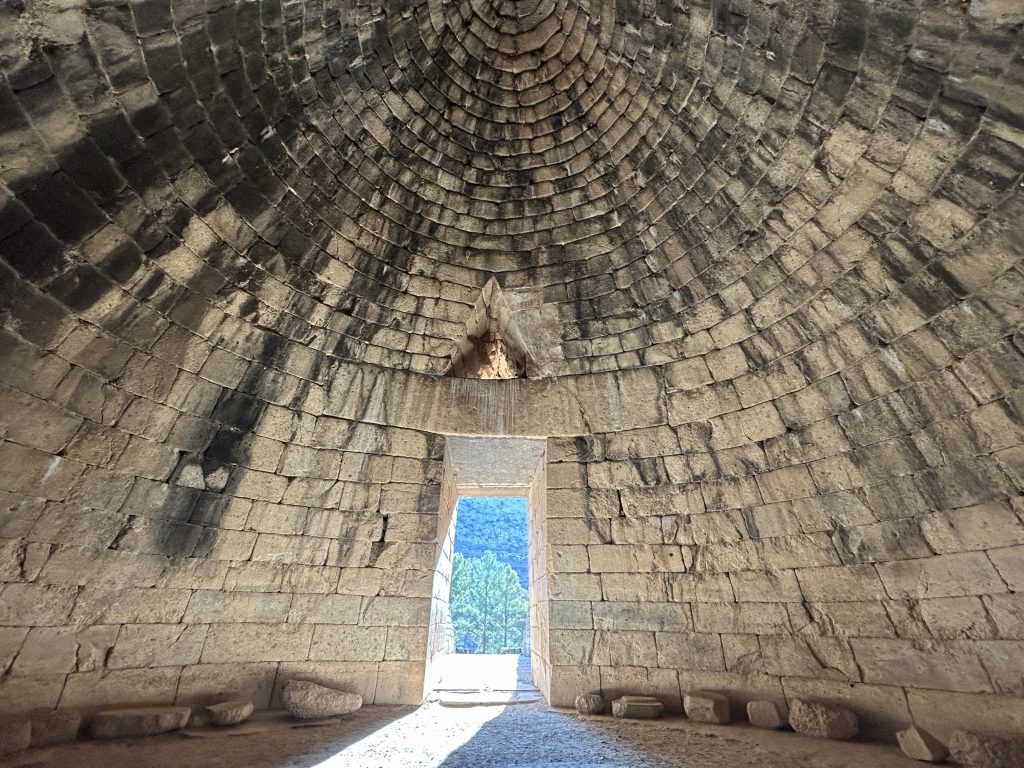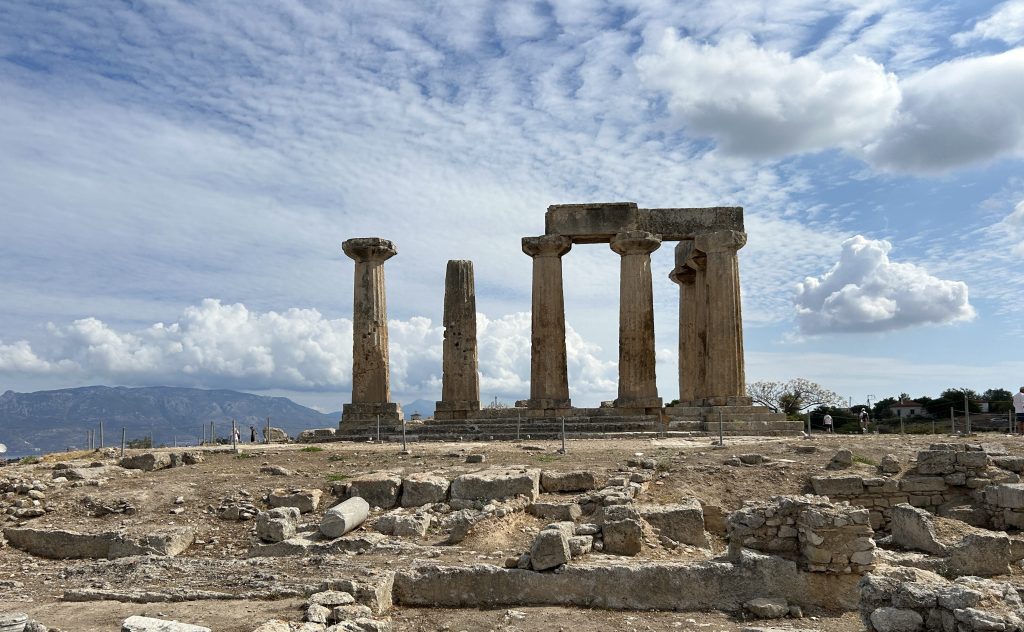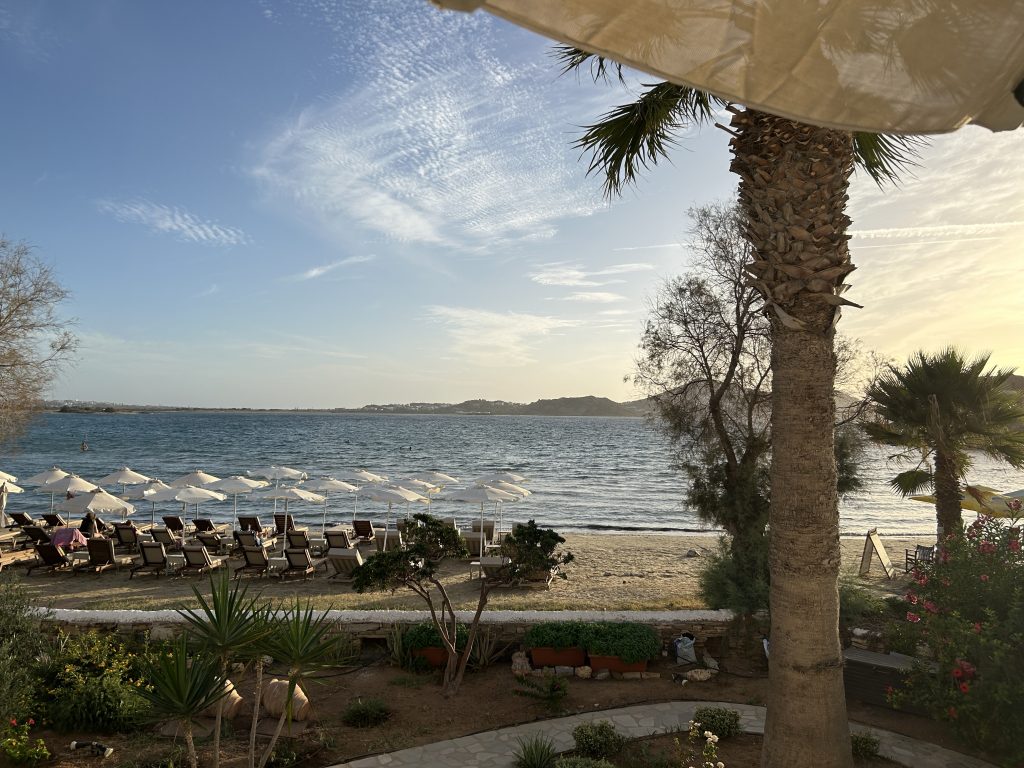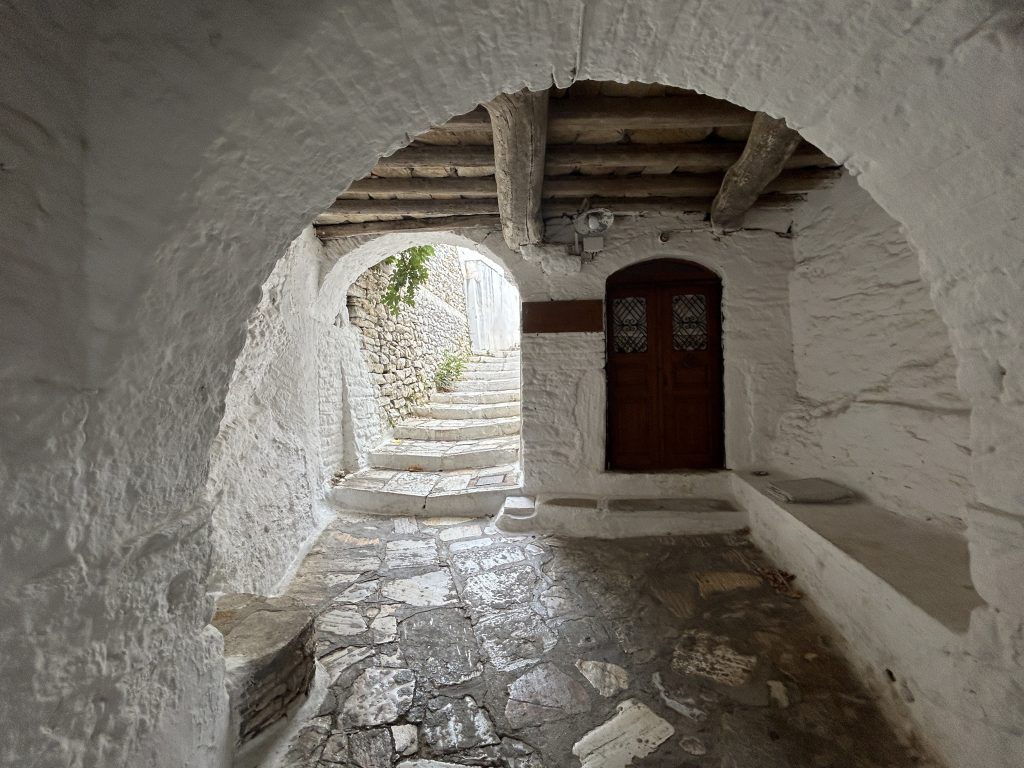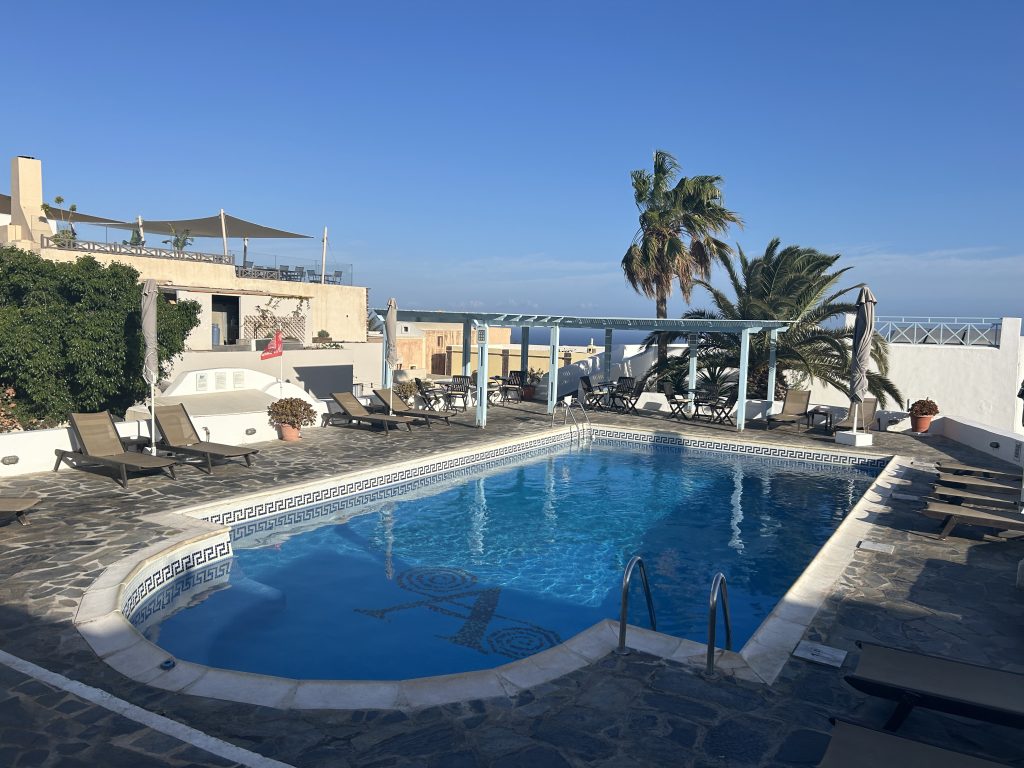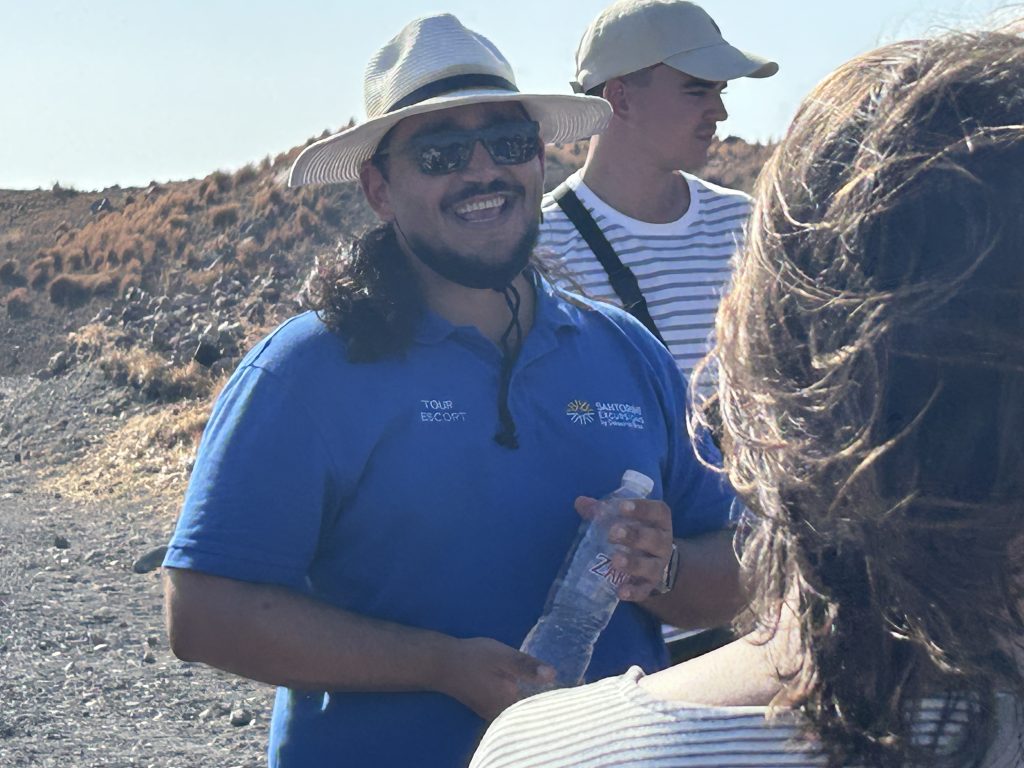Nine Great Reasons To Visit Meteora in Greece
Meteora is located in the Thessaly region in northern Greece and is out-of-this-world spectacular. And with over three million visitors annually, it’s been well and truly discovered.
When Julia (daughter and travel companion on my trip to Greece) first showed me pictures of the stunning rock columns of Meteora and told me she was going to include it in our itinerary,
I was both intrigued and excited. I’d seen the pictures of monasteries perched atop rock columns, but I never realized they were accessible to visitors.

Very accessible as it turns out, so long as you have the knees for lots of climbing. Only one of the six monasteries (there used to be 24 monasteries) doesn’t require climbing.
In this travel guide to visiting Meteora, I describe my two-night and one full day trip to Meteora from Athens en route to Delphi, list the six monasteries, and share my top reasons and travel tips why you should definitely add Meteora to your list of must-see places in Greece.
Overview of Meteora
The region known as Meteora is located in Thessaly in northern Greece, about a four-hour drive from Athens. This spectacular area with its ancient monasteries perched atop spectacular rock formations is included on the World Heritage List.
Kalambaka (#1 on the map below and the main town sometimes referred to as Kalabaka) and its smaller sibling Kastraki (#2) at the towns in the Meteora region where you’ll find accommodations and restaurants.
A Suggested Itinerary for Visiting Meteora
While you could book a tour as a day trip from Athens to Meteora, I wouldn’t advise it. The distances are just too great to allow enough time to enjoy this most spectacular of destinations.
You’ll spend most of your time on a bus and see one or two of the Meteora monasteries along with thousands of other visitors, and you’ll not have time to view the famous Meteora sunset (a must-do), hike around some of the Meteora rocks, or explore lovely little Kalambaka.
So, first off, plan to stay in Meteora for at least one night. Two nights are better to give you a full day in which to enjoy both a morning and a sunset tour, explore Kalambaka and maybe go on a short hike.
You’ll easily find things to do in Meteora to fill your time.
Our trip to Meteora was organized by Visit Meteora which took care of the transfers and booking two excellent tours that I can highly recommend. Both were small group tours (my favorite kind). You could also book each component separately.
Here’s a 2-day trip that includes one overnight in Meteora and tours of the monasteries.
Day 1: Traveling to Meteora
- Pick-up at 8 am in Athens (#10) for the four-hour drive on a large bus to Meteora (#9)
- Arrival in Kalambaka and transfer to a shuttle bus that drops us at the Hotel Theatro Odysseum (recommended)
- Leisurely lunch in Kalambaka (great food and relaxed ambiance)
- Pick-up from the hotel for a four-hour small group tour called the Sunset Tour that visits the Monastery of Saint Stephen (actually a nunnery) and a church, includes a walk to see the caves where the first monks lived, and culminates with a stop high above the valley to take in breathtaking views of the sunset
Here’s a Sunset Tour you can take from Kalabaka or Kastraki that includes the hermit caves and of course, the breathtaking sunset over the Meteora rock formations and monasteries.
Day 2: All Day to Enjoy Meteora
- Pick-up at the hotel for a three-hour small group tour of Meteora that visits two of the monasteries not included on the Sunset Tour itinerary
- Leisurely lunch in Kalambaka
- Free afternoon and evening to enjoy the pool at Theatro Hotel Odysseon (or you could go hiking)
Six Monasteries at Meteora
The 6 monasteries that are open to the public in Meteora are:
- Holy Monastery of Great Meteoron (#3): a male monastery founded around 1340 that is the oldest and largest of all the monasteries of Meteora. The ancient kitchens are interesting.
- Holy Monastery of Varlaam (#4): the second largest monastery, founded in the mid-14th century by a monk named Varlaam. The frescoes inside the church are particularly beautiful.
- Roussanou Nunnery (#5): one of the most traditional of the monasteries and not as crowded as some of the others. To access, walk down from the main road through a lovely forest to reach the steps leading up to the monastery. It feels very peaceful here.
- Saint Stephen Nunnery (#7): connected by a small stone bridge to the road and the easiest of the six monasteries to access. As a result, it’s also one of the most crowded.
- Holy Trinity Monastery (#8): situated atop a rocky precipice over 400 meters high, it’s reached via 130 steps. The view from the top is stunning (which is saying something).
- Saint Nicholas Anapafsas Monastery (#6): the first monastery you come across after leaving Kastraki and the least visited.
Check to make sure the monastery you want to visit is open on the day of the week you are in Meteora. Here are the closing days in summer. Note that in the winter season, most monasteries are closed for at least two days each week. Check Meteora.com for details.
- Great Meteoran: Tuesday
- Varlaam: Friday
- Rousanou: Wednesday
- Saint Nicholas Anapafsas: Friday
- St. Stephen: Monday
- Holy Trinity: Thursday
Which Meteora Monasteries to Visit
This is a question visitors often ask when planning their visit to Meteora. During the two tours we took, we visited St. Stephen, Great Meteoron, and Roussanou. Each of them is quite similar and includes plenty of stairs (except for St. Stephen), a chapel, a souvenir shop (always), possibly a museum, and amazing views.
I suggest picking just two or three to visit. You’ll get the general idea pretty quickly, and you’ll likely see the monasteries you don’t visit from the vantage points of the monasteries you do visit.
If you don’t like crowds, select one of the smaller monasteries such as Roussanou.
Note that each monastery charges an entrance fee of three euros.
The roads winding around the stone pillars offer plenty of viewpoints you can stop at to take photos. Both of the tours we took included frequent stops to take pictures.




Best Time to Visit Meteora
I visited Meteora in September and the weather was perfect–warm, but not too hot. Some of the monasteries were crowded, but not nearly as crowded as I understood they can get.
Our tour guides timed the monastery visits to avoid the largest influx of tour busses, many coming all the way from Athens.
I suggest visiting the monasteries either right after they open or just before they close. An hour is usually more than sufficient to tour a monastery.
Now that you know how to organize your time in Meteora, here are my reasons why you must visit (including plenty of recommendations!).
Nine Reasons for Visiting Meteora
1. Stunning Geological Formations
First and foremost, the scenery around Meteora is beyond incredible. The geological formations—shaped 60 million years ago—must be seen to be believed. Pictures give some idea of the size of the formations, but they cannot prepare you for their jaw-dropping grandeur.
On both tours we took in Meteora, we learned about the geological shenanigans required to shape such an incredible landscape. It’s quite a story!


The rock columns are omnipresent, visible from both Kalambaka and Kastraki. You’ll likely be staying in one of these towns during your visit.
Every time you step out of your hotel (or look out your window if you spring for a view), you’ll gaze up, up, up at these jagged formations and marvel at how they change with the passing of the sun across their grey flanks.
2. Fascinating History of the Monasteries
The geological formations alone would be reason enough to visit Meteora, but even more interesting is the fact that around 1100 AD, a group of intrepid monks moved into caves embedded in the rock columns.
After a few centuries, some even more intrepid monks decided they weren’t isolated enough in caves, so they started building monasteries on top of the rock columns.
Until recently, the only way to get from the valley up to a monastery was to rock climb or be cranked up in a basket. Rock climbing involved pounding sticks into the soft rocks.
One of the guides told us that the sticks sometimes broke. I couldn’t help wondering how many skeletons are buried in the deep valleys surrounding the rock pillars.

The sheer ingenuity and courage required to build and inhabit the first monasteries is mind-boggling.
Visiting the Monasteries
The six monasteries that welcome visitors are the big draw here. Two of the monasteries in Meteora are actually nunneries. There are approximately 50 nuns and 17 monks still living in the active monasteries of Meteora.
Visiting the Monastery of Saint Stephen
Saint Stephen is the only monastery in Meteora that is easily accessed from the road and does not require climbing long flights of steps that in the summer heat could be very challenging.
Unfortunately, everyone and their cousin who comes to Meteora on any day except Monday (when the place is closed) visits Saint Stephen monastery.
It’s the only place where we saw monastic people. Nuns dressed all in black with serene faces took tickets and sat next to the cash register in the gift shop.
Modest Dress Required
When we arrived, a box of scarves was made available to women who were wearing shorts or pants. Modest dress for men and women is required, and women are required to wear dresses, so even if you are wearing pants that cover your knees, you must also wrap a long scarf around your waist so it falls past your knees.
Although I was wearing a dress, I worried it didn’t sufficiently cover my knees and so I grabbed a scarf. However, it wasn’t any longer than my dress so was kind of useless.
At another monastery the next day, the attendant told me my dress was fine.

What to See
St. Stephen includes a church, a small museum, a gift shop, and spectacular views—which for most people is the real attraction.
The monasteries at Meteora were originally built between the 14th and 16th centuries. Time and wars (several of the monasteries were bombed during WWII) have destroyed most of them. Those remaining have been heavily renovated.
Other Monasteries
Each of the three monasteries we visited during the Sunset and Morning Tours of Meteora include a church, a museum, and a gift shop. I was most fascinated by the remains of the mechanisms used back in the day to hoist provisions and monks up the side of the cliffs.

Nowadays, stairs have been cut into the rock—and there are a lot of them. Meteora is not a great place to visit if you have mobility issues—or if you don’t like crowds.
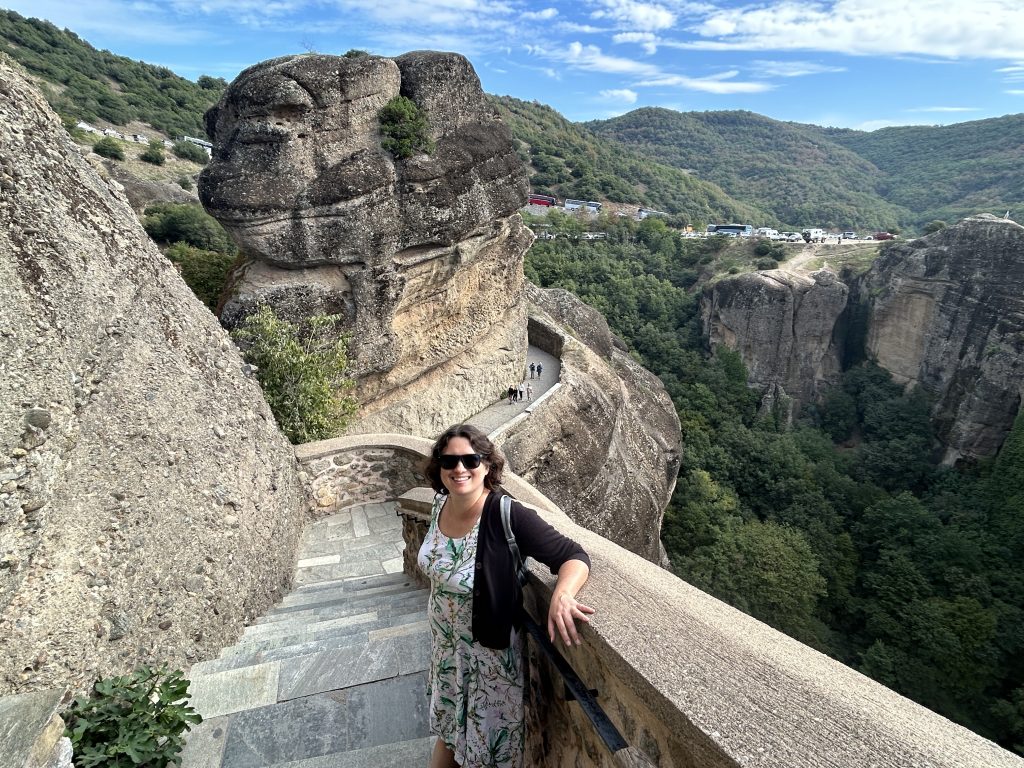
Frescoes in the Monasteries
Beautiful frescoes adorn each of the churches we visited. Photos are not allowed, although I saw several people snapping pics despite warnings from attendants.
There’s a heavy emphasis in the frescoes on depictions of the many and gruesome ways in which the early Christian saints and martyrs were tortured, mostly by the Romans, who were quite the hideously creative lot.
Most frescoes are quite new, having been painted during the rebuilding of the monasteries, some since WWII, so the pictures are alarmingly vivid and graphic.
I did manage to get one picture in a chapel where photos were allowed.

View from the Monasteries
The views from each of the monasteries are stupendous, unworldly even. No wonder Game of Thrones petitioned to shoot here.
The monks said no because they didn’t approve of any production that involved violence. Unfortunately, their refusal to allow on-location shooting didn’t stop the production company from taking a panorama of the area and then using it in the last episode of the first season.
Kind of sneaky, if you ask me.

3. Beautiful Ancient Churches and Precipitous Cave Dwellings
Take time to visit the ancient and evocative Church of the Virgin Mary in Kalambaka. Erected between the 10th and 11th centuries AD, this Byzantine church was built upon the ancient foundations of Greek and Roman temples. Many of the stones were incorporated into the current church.
Frescoes adorn the interior dominated by a marble pulpit that is unique in Greece. It rises imposingly at the center of the church in front of the Holy Gate.
During our Sunset Tour of Meteora, we hiked a short way up a gravel road to view the cliffs containing caves that once housed hermits. The wooden structures are medieval and intact because rock overhangs protect them from the elements.
Can you imagine monks living in those caves high up the rock faces?

4. Informative Small Group Tours
If you have a rental car, you can easily visit as many of the open monasteries as you wish. Alternatively, you can opt for a guided tour. Both the tours organized by Visit Meteora were first-rate, with tour guides who grew up in the area and were passionate about sharing the history of Meteora.
Finding a Meteora Tour
Several tour companies offer tours and activities in Meteora. If you arrive in Meteora without first booking a tour, just wander along the main street in Kalambaka and you’ll soon find a company selling local tours by bus, private car, hiking, or cycling.
If you have the funds, discover Meteora on a private tour. That way, you can choose which monasteries you want to visit and also ask your guide to take you to some out-of-the way places to escape the crowds.
Parking Woes at Meteora Monasteries
Parking is limited at the monasteries and a lot of the available space is taken up by massive tour busses. If you take a small group tour, you’ll be dropped right at the entrance to each monastery.
If you drive, you’re likely in for a long walk uphill from wherever you can find a parking place along the road.
In this photo taken from a monastery, you can see the cars and tour busses parked all along the road.

5. Breathtaking Sunsets
High above the valley are several sunset-watching spots from which you can bask in the rays of the setting sun. Adventurous souls walk far out onto the rocks to get the perfect shot. I didn’t venture too close to the edge, but I still enjoyed some remarkable views.
Julia walked farther out to the edge and took this video.
6. Charming Small Towns
We stayed in Kalambaka, which is the larger of the two Meteora towns. The central area with its smattering of outdoor cafes and a cooling fountain is charming and laid-back.
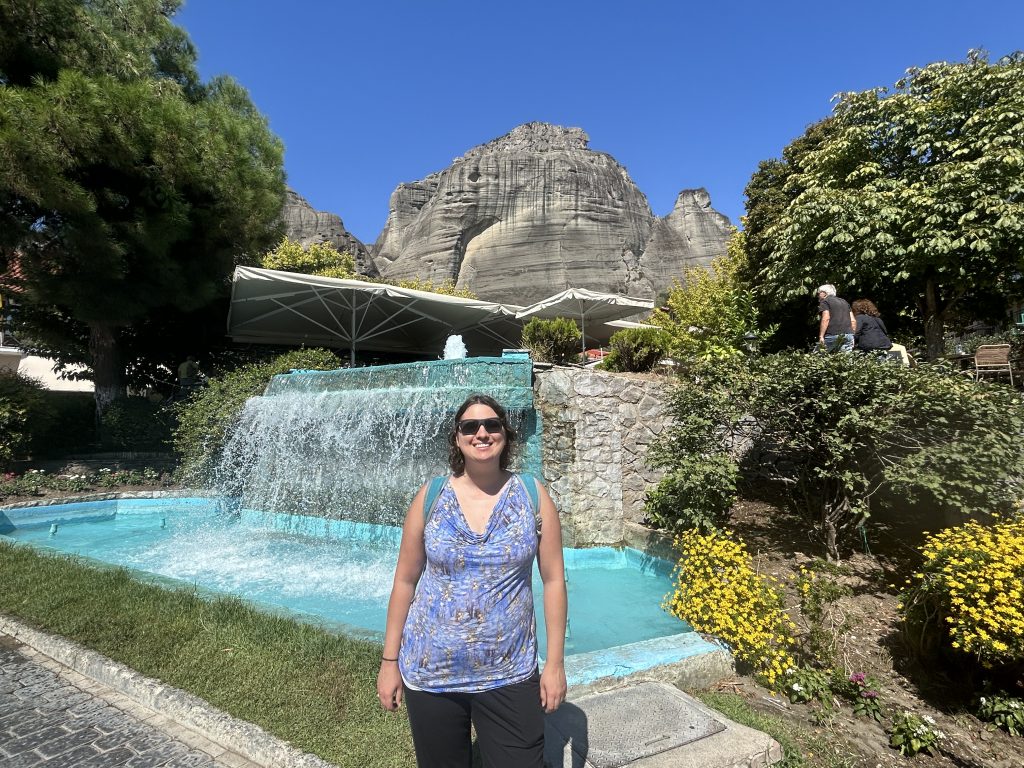
At one restaurant, the server had just moved from Canada where she grew up back to Greece. We enjoyed a great conversation with her while chowing down on yet another tasty Greek meal.
7. Good Accommodation Options
Both Kalambaka and Kastraki have a variety of accommodation options at reasonable prices.
The Hotel Theatro Odysseum where we stayed had comfortable rooms, each themed around a movie and including large photographs of actors and actresses. The staff were friendly, the pool a bit on the chilly side in late September, and the views of the iconic granite columns spectacular.

8. Plenty of Hiking and Cycling Opportunities
If you’re energetic, you can hike around the rocks and into the valleys that do not have monasteries nearby and so are free of tour busses and gift shops.
You can also rent ebikes to scale the steep roads with ease, although I’m not sure I’d want to share the roads with the many massive tour busses.
The landscape is wild and beautiful away from the tourist beat, and it doesn’t take long to leave the main roads behind. You could easily spend a week exploring all the area has to offer.

9. Easy to Reach From Athens
As noted previously, Meteora is about 350 kilometers from Athens, with busses being the only public transit option apart from flying. Visit Meteora organized our transport to Meteora which included a shuttle bus to our hotel and the two tours in addition to a private transfer from Meteora to Delphi.
If you’re driving, you can go on to explore more of northern Greece. West of Meteora the town of Thessaloniki and the island of Corfu—a destination that is definitely on my to-visit-next list.
Tours to Meteora
Check out some of the tours offered through GetYourGuide or connect with Visit Meteora directly.
Conclusion
Meteora will surprise and delight you. For me, the big attraction is the geological formations, the views, and the town of Kalambaka.
I was less interested in the monasteries which I found too crowded and commercialized. I can’t imagine many of the full-time inhabitants enjoy a particularly contemplative life there. Perhaps that is why the number of monks and nuns continues to dwindle every year.
Have you visited Meteora? Share your recommendations in the Comments below.
Here are more posts about Greece:
- Stay in Oia for a Stunning Santorini Experience
- How to Spend Two Laid-Back, Glorious Days on the Greek Island of Naxos
- How to Spend a Perfect Artsy Traveler Day in Athens
- Explore Greek Cuisine in a Savor Nafplio Cooking Class
- How To Spend Two Wonderful Days in Charming Nafplio in Greece
- Should You Make the Climb to the Acropolis of Athens?




